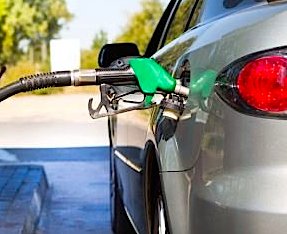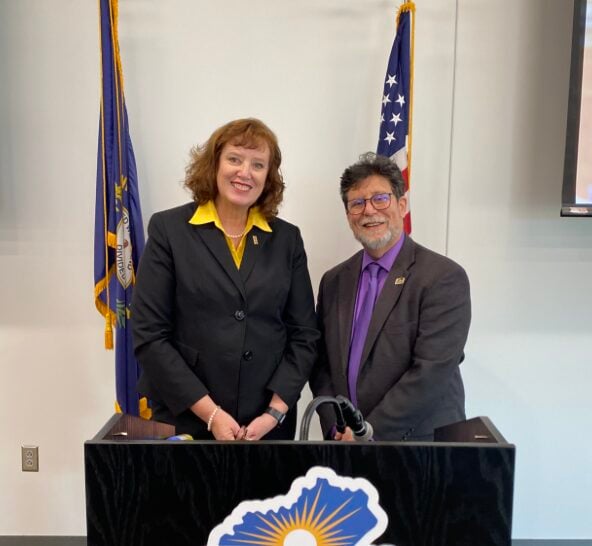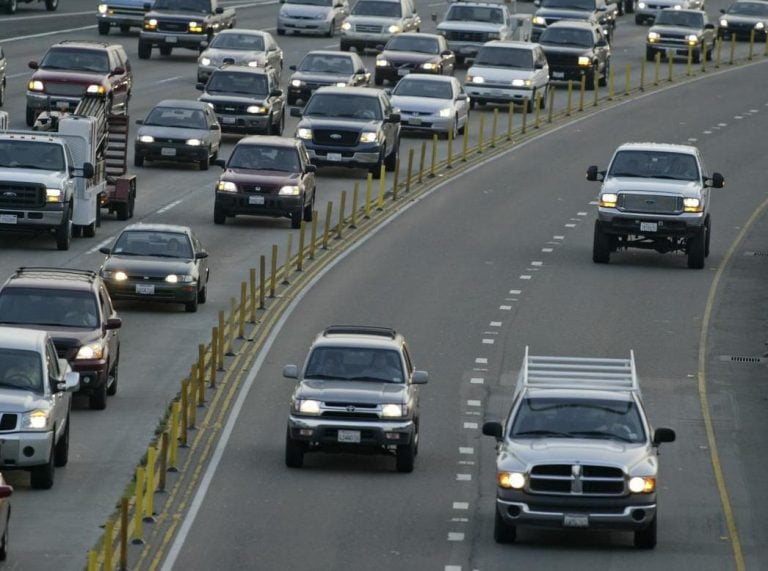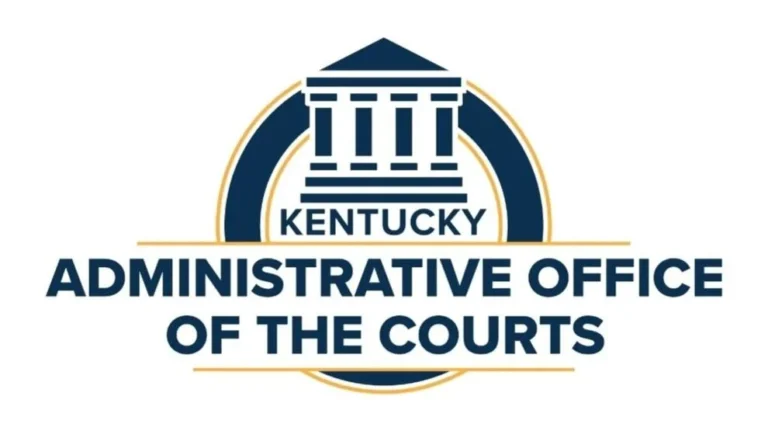With Spring Break in full swing, drivers are paying more at the pump compared to last week. The average price for a gallon of regular gasoline in Kentucky jumped up 13 cents in the past week to $2.82, while the average gas price in Lexington soared 31 cents in just one week to land at $2.94.
Kentucky gas prices spring forward – in a big way
As spring arrived, so did the switchover to summer-blend gasoline, causing a climb in gas price as the greater cost of producing the summer-blend fuel is passed along to consumers. Summer-blend gas reduces evaporative emissions and smog formation during warm-weather months, when gasoline tends to evaporate more readily.

In the summer, over a dozen different blends are produced to meet various state and regional requirements, complicating both production and distribution of fuels. The production process takes longer and the overall yield of gasoline per barrel of oil is lower. Typically, this switchover adds about 15 cents per gallon, as seen in the rise in Kentucky’s average.
Even after this week’s fast climb, the Kentucky gas price average is still trending 44 cents lower than a year ago, while the current Lexington gas price is still 31 cents lower than a year ago, all due to tepid gasoline demand and comparatively weak crude oil prices.
National gas price average rises modestly
Some areas of the country are seeing a more gradual rise in gas prices, with the cost per gallon edging upward incrementally rather than by leaps and bounds. This could be attributed to the timing of when local retailers are paying higher prices for summer blends at the wholesale level. One of the reasons gas prices differ from one area to another is due to the differences in timing of wholesale gas orders and what retailers pay on any given day.
The national average for a gallon of gas went up just 3 cents since last Thursday to $3.15. Gas prices typically start going up this time of year and peak during summer as greater demand adds to the price boost at the pump. Today’s national average for a gallon of gas is $3.15, 3 cents higher than a month ago and 38 cents lower than a year ago.
“Kentucky gas prices are still the eighth lowest in the nation, but this week’s dramatic jump is a reminder of the higher prices we see during warm-weather months,” said Lori Weaver Hawkins, public affairs manager, AAA Blue Grass. “While gas prices are trending considerably lower than a year ago, motorists will notice the jump at the pump the next time they fill up.”

Kentucky’s average gas price for a gallon of regular gasoline rose 4 cents overnight to $2.82, 13 cents higher than one week ago and 8 cents higher than a month ago. One year ago at this time, the average in Kentucky was at $3.26. Lexington’s average gas price took an 11 cent leap overnight to land at $294. Lexington’s current gas price average is 31 cents higher than a week ago and 15 cents higher than a month. Lexington’s gas price was $3.25 a year ago
According to new data from the Energy Information Administration (EIA), gasoline demand decreased from 8.81 b/d last week to 8.64. Total domestic gasoline supply decreased from 240.6 million barrels to 239.1. Gasoline production decreased last week, averaging 9.2 million barrels per day.
Today’s national average for a gallon of gas is $3.15, 3 cents higher than a month ago but 38 cents lower than a year ago.
Oil Market Dynamics
At the close of Wednesday’s formal trading session, WTI rose 65 cents to settle at $69.65 a barrel. The EIA reports that crude oil inventories decreased by 3.3 million barrels from the previous week.
At 433.6 million barrels, U.S. crude oil inventories are about 5% below the five-year average for this time of year.

http://gasprices.aaa.com/
Quick Gas and Electricity Stats
Gas
The nation’s top 10 most expensive gasoline markets are California ($4.66), Hawaii ($4.52), Washington ($4.13), Nevada ($3.77), Oregon ($3.76), Illinois ($3.44), Alaska ($3.40), Arizona ($3.33), Idaho ($3.32), and Pennsylvania ($3.25).
The nation’s top 10 least expensive gasoline markets are Mississippi ($2.68), Oklahoma ($2.72), Louisiana ($2.75), Texas ($2.76), Alabama ($2.77), Tennessee ($2.81), South Carolina ($2.81), Kentucky ($2.82), Kansas ($2.83), and Arkansas ($2.83).
Electric
The nation’s top 10 most expensive states for public charging per kilowatt hour are Hawaii (56 cents), West Virginia (46 cents), Montana (44 cents), South Carolina (42 cents), Tennessee (42 cents), Idaho (42 cents), Alaska (41 cents), Kentucky (41 cents), New Hampshire (40 cents), and Louisiana (39 cents).
The nation’s top 10 least expensive states for public charging per kilowatt hour are Kansas (22 cents), Missouri (25 cents), Nebraska (26 cents), Iowa (26 cents), North Dakota (26 cents), Delaware (27 cents), Michigan (29 cents), Texas (29 cents), Utah (29 cents), and Washington, DC (30 cents).
AAA gas-saving tips
• Get your vehicle checked out. Perform regular car maintenance at the intervals recommended by the vehicle manufacturer in the owner’s manual or as indicated by the in-car maintenance reminder system. If you have an aging battery, be sure to have it tested before heading out on your trip. Find a AAA Approved Auto Repair Facility here.
• Keep tires properly inflated. Under-inflated tires can decrease your gas mileage by approximately 3%. Not to mention, properly inflated tires are safer and last longer. Check pressure in all four tires every two weeks with an accurate, hand-held air pressure gauge.
• Know your octane. Do not purchase mid-grade or premium gasoline unless your owner’s manual specifically recommends it. According to AAA research, Americans waste more than $2.1 billion annually on premium gas in vehicles designed to run on regular fuel. AAA found no benefit to using premium gas instead of regular-grade fuel. At the time of the study, 70% of U.S. drivers owned a vehicle that required only regular gasoline.
• Avoid idling. Idling gets zero miles per gallon. Letting your vehicle idle for more than 10 seconds uses more gas than shutting it off and restarting. Don’t start your car until you are ready to go. The engine actually warms up more quickly once the car is operating, and will stay warm after stopping. Avoid drive-up windows. Park and go inside instead.
• Observe the speed limit. Gas mileage decreases rapidly at speeds above 60 mph. Each 5 mph you drive over 60 mph is like paying an additional $0.15 per gallon of gas. Using cruise control on the highway helps you maintain a constant speed and, in most cases, will save gas.
• Drive sensibly. Aggressive driving (speeding, rapid acceleration and braking) wastes gas. It can lower your gas mileage by 33 percent at highway speeds and by 5 percent around town.
• Plan your trip. Carefully planning out your road trip can save you time and money. With a little planning, you can avoid retracing your route and reduce the distance you travel as well. You’ll not only save fuel, but also reduce wear and tear on your car.
• Minimize drag. Drag reduces fuel efficiency. Driving with the windows open, using roof- or rear-mounted racks and carrying heavy loads increase vehicle drag. A roof rack or carrier provides additional cargo space and may allow you to meet your needs in a smaller, more fuel-efficient car. However, a loaded roof rack can decrease your fuel economy by 5 percent. Reduce aerodynamic drag and improve your fuel economy by using a removable rack and placing items inside the trunk whenever possible. Avoid carrying unnecessary items, especially heavy ones. An extra 100 pounds in the trunk reduces a typical car’s fuel economy by 1-2%.
American Automobile Association (AAA)





















